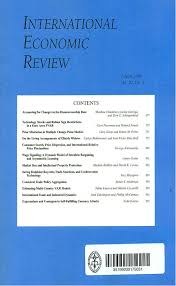
Hartog, J., \van Ophem\, J.C.M. and Vijverberg, W. (1993). Job complexity and wages International Economic Review, 34(4):853--872.
-
Affiliated authorsHans van Ophem, Joop Hartog
-
Publication year1993
-
JournalInternational Economic Review
We estimate a model inspired by Tinbergen's 1956 article, with utility maximizing job choice, where utility depends on job complexity and the wage rate, and where the equilibrium wage structure provides for compensation for more complex jobs. It involves maximum likelihood estimation of a two-equation model with heteroscedastic errors, in which one of the equations is an ordered probit. In the wage function, individual characteristics and job level interact (comparative advantage). Females face a steeper wage slope across job levels. Individuals' marginal rate of substitution between wage and job complexity is increasing both in job complexity and wages.